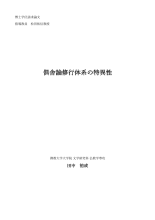4 0 0 0 OA 不律儀の獲得 ― 倶舎論安慧疏・業品第 36 偈 cd 句の梵文和訳 ―
- 著者
- 加納 和雄 Jowita Kramer 横山 剛 田中 裕成 Sebastian Nehrdich 中山 慧輝 小南 薫 小谷 昂久
- 出版者
- 対法雑誌刊行会
- 雑誌
- 対法雑誌 (ISSN:24355674)
- 巻号頁・発行日
- vol.4, pp.39-85, 2023 (Released:2023-12-31)
Sthiramati's Tattvārthā, the extensive commentary on the Abhidharmakośa and its bhāṣya, had been known only in the form of fragments of Chinese translations, fragments of Uyghur translation from the lost Chinese translation, and Tibetan translation. In recent years, however, the original Sanskrit text of the Tattvārthā has become available, and the results of the research have been published. As for the chapter of Karmanirdeśa (Chapter 4), its Sanskrit text on Abhidharmakośa verses 4.34–37 has been published. In this paper, we will continue the translation of the Tattvārthā focusing on verse 4.36cd. The verse discusses the scope and motivation of the acquisition of non-restraints (asaṃvara). The non-restraints is the non-information (avijñapti) that keeps away the good and habituates the bad, and is said to be possessed by those who kill for their own lives (slaughterers, hunters, executioners, etc.) and by those who steal (thieves, etc.). Verses 36cd discusses to whom, to which evil karma, and by which cause the non-restraints is acquired. In addition, this paper will present the texts and translations of Vasubandhu's Abhidharmakośa/bhāṣya and Saṃghabhadra's 順正理論 in order to clarify the developement of interpretation from Vasubandhu via Saṅghabhadra to Sthiramati. Then, we will identify passages of Saṅghabhadra that Sthiramati seems to silently borrow, and try to recover some parts of the original text of Saṃghabhadra.
2 0 0 0 IR 倶舎論修行体系の特異
1 0 0 0 OA 律儀の獲得 ― 倶舎論安慧疏・業品第35偈の梵文和訳 ―
- 著者
- 加納 和雄 Jowita Kramer 横山 剛 田中 裕成 Sebastian Nehrdich 中山 慧輝 小南 薫
- 出版者
- 対法雑誌刊行会
- 雑誌
- 対法雑誌 (ISSN:24355674)
- 巻号頁・発行日
- vol.2, pp.63-98, 2021 (Released:2021-08-01)
The present paper is the first of a series of textual studies on Sthiramati’s Tattvārthā on Abhidharmakośa(bhāṣya) 4.35–44. The series will provide a Sanskrit text and an annotated Japanese translation of the Tattvārthā together with texts and translations of Vasubandhu's Abhidharmakośabhāṣya and Saṃghabhadra’s *Nyāyānusāriṇī 順正理論 . The *Nyāyānusāriṇī, the earliest available commentary on the Abhidharmakośabhāṣya, is frequently quoted by Sthiramati explicitly and silently. Therefore it is one of the most important witnesses for understanding the Tattvārthā. Abhidharmakośa 4.35–44 deals with the attainment and the abandonment of the three kinds of the unmanifest (avijñapti), i.e., restraint (saṃvara), non-restraint (asaṃvara), and neither-restraint-nor-non-restraint (naiva-saṃvara-nāsaṃvara). This paper focusses on Abhidharmakośa 4.35 and its commentaries, which mainly discuss the scope of the three kinds of restraint (i.e. prātimokṣasaṃvara, dhyānasaṃvara and anāsravasaṃvara).
